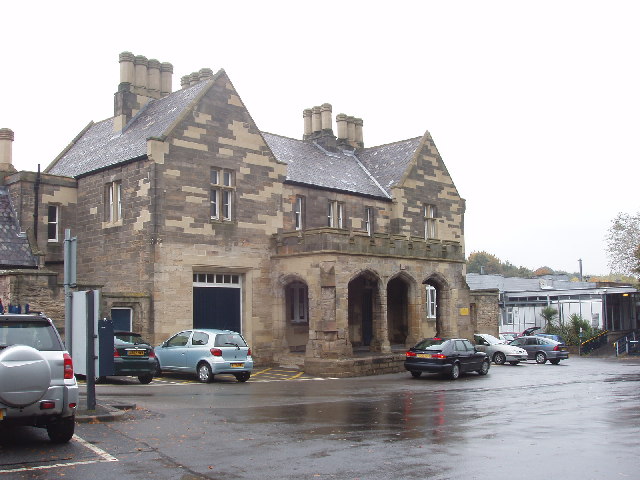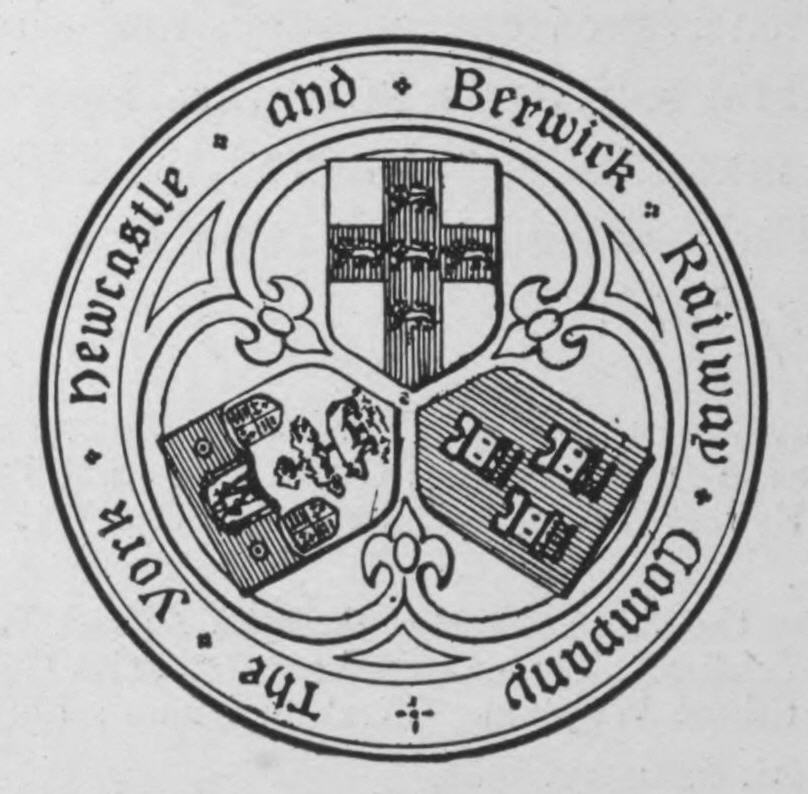|
Durham (Gilesgate) Railway Station
Durham (Gilesgate) railway station (when in passenger use known simply as Durham and later also as Durham Goods) served the Gilesgate area of Durham City in County Durham, North East England North East England is one of nine official regions of England at the first level of ITL for statistical purposes. The region has three current administrative levels below the region level in the region; combined authority, unitary authorit ... from 1844 to 1857 as the terminus of the Newcastle & Darlington Junction Railway Durham Branch passenger service (later to be incorporated into the Leamside line). Its life as a passenger station was short and it was quickly converted to goods station, a role which it played for more than a century. History The station opened on 15 April 1844 by the Newcastle and Darlington Junction Railway. It was adjacent to Gilesgate and Station Lane. This was the second of four railway stations built to serve Durham City, the first being Shincliffe ... [...More Info...] [...Related Items...] OR: [Wikipedia] [Google] [Baidu] |
Gilesgate
Gilesgate is a place in County Durham, England. It is situated east of the centre of Durham, England, Durham. It is also a ward of Durham with a total population taken at the United Kingdom Census 2011, 2011 census was 8,074. Gilesgate was originally the main street in a settlement associated with Kepier Hospital, the Hospital of St Giles which was sited by the existing St Giles Church, Durham, St Giles Church. The street was divided in the 1960s by the construction of the A690 and the demolition of a number of houses, pubs and shops at the foot of Gilesgate Bank to construct a roundabout. East of Gilesgate itself was Gilesgate Moor. During the 19th century, housing extended along the Sherburn and Sunderland Roads and the colliery village of New Durham, Durham, New Durham was built within the parish. Additional housing was constructed along the Sherburn Road in the 1930s, including the Sherburn Road Estate, built to house residents from the slums of Framwelgate. Following the Se ... [...More Info...] [...Related Items...] OR: [Wikipedia] [Google] [Baidu] |
Shincliffe Town Railway Station
Durham is a railway station on the East Coast Main Line, which runs between and . The station, situated south of Newcastle, serves the cathedral city of Durham in County Durham, England. It is owned by Network Rail and managed by London North Eastern Railway. It is managed and served frequently by London North Eastern Railway (as a stop on the East Coast Main Line). It is also served by CrossCountry, TransPennine Express and Northern trains. Durham is a through station with two platforms, located north of the city centre, on a hill. South of the station, the railway line is elevated on a viaduct. After a renovation between 2006 and 2008, the original stone station building is now the ticket hall. History The city of Durham has been served by four stations, only one of which survives today: *Shincliffe (called Shincliffe Town from 1861): located in nearby Shincliffe, this station was built in 1839 and was served by the Durham and Sunderland Railway, using rope haulag ... [...More Info...] [...Related Items...] OR: [Wikipedia] [Google] [Baidu] |
Railway Stations In Great Britain Closed In 1857
Rail transport (also known as train transport) is a means of transport that transfers passengers and goods on wheeled vehicles running on rails, which are incorporated in tracks. In contrast to road transport, where the vehicles run on a prepared flat surface, rail vehicles ( rolling stock) are directionally guided by the tracks on which they run. Tracks usually consist of steel rails, installed on sleepers (ties) set in ballast, on which the rolling stock, usually fitted with metal wheels, moves. Other variations are also possible, such as "slab track", in which the rails are fastened to a concrete foundation resting on a prepared subsurface. Rolling stock in a rail transport system generally encounters lower frictional resistance than rubber-tyred road vehicles, so passenger and freight cars (carriages and wagons) can be coupled into longer trains. The operation is carried out by a railway company, providing transport between train stations or freight customer ... [...More Info...] [...Related Items...] OR: [Wikipedia] [Google] [Baidu] |
Railway Stations In Great Britain Opened In 1844
Rail transport (also known as train transport) is a means of transport that transfers passengers and goods on wheeled vehicles running on rails, which are incorporated in tracks. In contrast to road transport, where the vehicles run on a prepared flat surface, rail vehicles ( rolling stock) are directionally guided by the tracks on which they run. Tracks usually consist of steel rails, installed on sleepers (ties) set in ballast, on which the rolling stock, usually fitted with metal wheels, moves. Other variations are also possible, such as "slab track", in which the rails are fastened to a concrete foundation resting on a prepared subsurface. Rolling stock in a rail transport system generally encounters lower frictional resistance than rubber-tyred road vehicles, so passenger and freight cars (carriages and wagons) can be coupled into longer trains. The operation is carried out by a railway company, providing transport between train stations or freight customer ... [...More Info...] [...Related Items...] OR: [Wikipedia] [Google] [Baidu] |
Former North Eastern Railway (UK) Stations
A former is an object, such as a template, gauge or cutting die, which is used to form something such as a boat's hull. Typically, a former gives shape to a structure that may have complex curvature. A former may become an integral part of the finished structure, as in an aircraft fuselage, or it may be removable, being using in the construction process and then discarded or re-used. Aircraft formers Formers are used in the construction of aircraft fuselage, of which a typical fuselage has a series from the nose to the empennage, typically perpendicular to the longitudinal axis of the aircraft. The primary purpose of formers is to establish the shape of the fuselage and reduce the column length of stringers to prevent instability. Formers are typically attached to longerons, which support the skin of the aircraft. The "former-and-longeron" technique (also called stations and stringers) was adopted from boat construction, and was typical of light aircraft built until the ad ... [...More Info...] [...Related Items...] OR: [Wikipedia] [Google] [Baidu] |
Belmont Railway Station (Durham)
Belmont Junction railway station was a railway station that served the civil parish of Belmont in County Durham, North East England, from 1844 to 1857. It was located at the junction between the main line Mainline, ''Main line'', or ''Main Line'' may refer to: Transportation Railway * Main line (railway), the principal artery of a railway system * Main line railway preservation, the practice of operating preserved trains on an operational railw ... and branch of the Newcastle and Darlington Junction Railway. History The station opened as Belmont on 15 April 1844 by the Newcastle & Darlington Junction Railway. It was situated north of the railway bridge over the A690, close to junction 62 of the A1. The station name was changed to Belmont Junction in 1852. The station ceased to have a purpose when the North Eastern Railway opened its branch from to , on which the present day Durham station is located. This station is far closer to the centre of Durham than the forme ... [...More Info...] [...Related Items...] OR: [Wikipedia] [Google] [Baidu] |
Travelodge
Travelodge (formerly TraveLodge) refers to several hotel chains around the world. Current operations include: the United States, Canada, the United Kingdom, Spain, Ireland, New Zealand, Australia and several countries in Asia. However, many of these are operated by independent companies that have no connection with the brand in other countries. As of December 31, 2018, it has 435 properties with 31,005 rooms. United States The Travelodge brand was one of the first motel chains in the United States. Scott King, the Travelodge Corporation founder, was incorporated in Southern California in 1939. The first TraveLodge opened in San Diego in 1940. For many years, Travelodge was headquartered in El Cajon, California, east of San Diego. During its early years, TraveLodge emphasized itself as a budget motel chain that offered functional accommodations at rates lower than other chains. TraveLodge also emphasized that its motels were centrally located in or near downtown areas in order t ... [...More Info...] [...Related Items...] OR: [Wikipedia] [Google] [Baidu] |
Durham & Sunderland Railway
The York, Newcastle and Berwick Railway (YN&BR) was an English railway company formed in 1847 by the amalgamation of the York and Newcastle Railway and the Newcastle and Berwick Railway. Both companies were part of the group of business interests controlled by George Hudson, the so-called ''Railway King''. In collaboration with the York and North Midland Railway and other lines he controlled, he planned that the YN&BR would form the major part of a continuous railway between London and Edinburgh. At this stage the London terminal was Euston Square (nowadays called Euston) and the route was through Normanton. This was the genesis of the East Coast Main Line, but much remained to be done before the present-day route was formed, and the London terminus was altered to King's Cross. The YN&BR completed the plans of its predecessors, including building a central passenger station in Newcastle, the High Level Bridge across the River Tyne, and the viaduct across the River Tweed, th ... [...More Info...] [...Related Items...] OR: [Wikipedia] [Google] [Baidu] |
County Durham
County Durham ( ), officially simply Durham,UK General Acts 1997 c. 23Lieutenancies Act 1997 Schedule 1(3). From legislation.gov.uk, retrieved 6 April 2022. is a ceremonial county in North East England.North East Assembly â€About North East England. Retrieved 30 November 2007. The ceremonial county spawned from the historic County Palatine of Durham in 1853. In 1996, the county gained part of the abolished ceremonial county of Cleveland.Lieutenancies Act 1997 . Retrieved 27 October 2014. The county town is the of |
Newcastle & Darlington Junction Railway
The York, Newcastle and Berwick Railway (YN&BR) was an English railway company formed in 1847 by the amalgamation of the York and Newcastle Railway and the Newcastle and Berwick Railway. Both companies were part of the group of business interests controlled by George Hudson, the so-called ''Railway King''. In collaboration with the York and North Midland Railway and other lines he controlled, he planned that the YN&BR would form the major part of a continuous railway between London and Edinburgh. At this stage the London terminal was Euston Square (nowadays called Euston) and the route was through Normanton. This was the genesis of the East Coast Main Line, but much remained to be done before the present-day route was formed, and the London terminus was altered to King's Cross. The YN&BR completed the plans of its predecessors, including building a central passenger station in Newcastle, the High Level Bridge across the River Tyne, and the viaduct across the River Tweed, that ... [...More Info...] [...Related Items...] OR: [Wikipedia] [Google] [Baidu] |





